- Home
- Herbie Brennan
Through the Wardrobe Page 17
Through the Wardrobe Read online
Page 17
The world’s most popular children’s writer, J. K. Rowling, has expressed dismay at the number of her readers who claim Slytherin House as their spiritual home. Unlike many writers, Rowling has not made her evil characters attractive (though the movie-makers have, by casting good-looking actors for Draco and his father). Rowling’s Slytherin characters are plainly liars, cheats, cowards, and bullies who will most likely grow up to be Dark Wizards who torture and kill men, women, and children. How could anyone find them attractive?!
Psychologists and others point out that young people often rebel against generally accepted opinion—Slytherin is bad, Gryffindor is good—and that this is normal and healthy. After all, Hogwarts is not real and Slytherins do have a Gothic counter-culture look about them, a hint of the fashionable vampire. I myself do not side with the do-gooders, moral majority fascists, and bootlickers on the side of “Right.” There are many people, like Dolores Umbridge, who commit evil in the name of what is “good” and “right.” Indeed, the meaning of these words—and what they are applied to—can get pretty muddled.
Enter: C. S. Lewis and the Chronicles of Narnia.
Big sigh of relief.
It cannot be overstated that, when it comes to C. S. Lewis, there is no question about what is right and what is wrong, what is good and what is bad. There is no marriage between heaven and hell, as the poet William Blake tried to argue, but rather “a great divorce,” which is the name C. S. Lewis gave one of his adult books written against Blake. And I, for one, thank him for that. Why? Because, regardless of the gray areas in which adults must play, this clarity made a great difference to me as a child and to how I turned out.
Let me set the scene.
When I was five years of age, my family emigrated from Ireland to Toronto, Canada. After some moving about, we ended up in a low-income housing estate with other displaced Europeans—“economic refugees” we would be called nowadays—from England, Scotland, Italy, Poland, and Hungary. All of us felt deeply the loss of homeland, family networks, and small rural or village communities where everyone knew each other. Whether melting pot or mosaic, we were thrown into a stew of foreign nationalities and urban anonymity. At the same time, our families remained intact, and we all attended churches and schools, practicing some form of Christianity. In my particular neighborhood, all the children, both Catholic and Protestant, attended a local, private community hall run by evangelists where we got snacks, did arts and crafts, and had story- and playtime. Along with the regular religious instruction we were getting at home, school, and church, the evangelists’ teaching weighed in on the side of right and good with a colorful dollop of hellfire and brimstone, sin and damnation.
And not one bit of it affected me, I can tell you.
You see, the 1950s was a dangerous time to be a kid. Corporal punishment—a fancy word for assault on a child—was rife. Any adult could hit you: parent, teacher, neighbor, clergy, babysitter, shopkeeper, whoever. This widespread freedom to cross a child’s physical boundaries no doubt made it all the easier for certain adults to cross sexual ones. Wherever physical abuse of children is rampant, there too you will find sexual abuse. In short, as a kid, I struggled for survival in “enemy occupied territory,” as C. S. Lewis called the world. In a time and place where children were “seen and not heard,” trusting adults or believing anything they said was not a wise move.
So there I was, a tiny, skinny, undernourished little girl, with tangled hair and a dirty face, about seven years old, who wore slacks under her dresses (because you had to wear a skirt or dress if you were a girl in the 1950s, and this is how my sisters and I got around that rule). Founder of the Mischief Club, I led a small gang of girls and boys in such activities as letting air out of people’s tires, throwing stones at windows, and ringing doorbells then running away, plus worse things such as tormenting small animals and bullying other children. I remember pushing a car—which we discovered by chance was not properly braked—down a hill and toward the main road. The driver came racing out of his house in time to catch it, even as we raced off, screeching with laughter. We didn’t think about the possible consequences of our actions, that we could have caused a serious or even fatal accident.
Given the way I was going so young, I was possibly destined to follow some of the older kids into stealing cars, shop-lifting, underage drinking, and whatnot (there were no drugs at the time, that I know of). Maybe. Maybe not. I’ll never know, because something happened to stop my wayward decline.
Whatever else was going on inside and outside my home, there were always books, and I was always a reader. Though our family did not have enough money to buy books, my father made a point of bringing each of us to the library. I loved the library: the musty, woody smell of books; the shafts of dim light that fell through the windows; the hushed silence that mirrored my own awe. I started with Babar the Elephant and Madeleine and Rupert the Bear; but true reading didn’t begin till one of my older sisters gave me The Silver Chair.
I didn’t dabble in the Chronicles of Narnia, I drowned. A full-bodied baptism. There were many more books to follow, E. Nesbit’s, P. L. Travers’s, Patricia Lynch’s, J. M. Barrie’s, J. R. R. Tolkien’s, and so on—but none had the same overwhelming affect. It was a conversion, short and simple. It started with an immediate love for Narnia itself. I suspect the beauty of that magical country touched upon the original loss of the green hills of Ireland and the blue waters of the Irish Sea.
But there was something more, something much deeper. The books slowly but surely changed me and my behavior. Someone once said that C. S. Lewis made goodness interesting. More than that, he made it desirable.
Firstly, his child characters were anything but prissy or sugary sweet. They bickered and fought amongst themselves, acted selfishly and thoughtlessly, were often greedy, jealous, cranky, and dishonest. They made mistakes, showed poor judgment, and failed in parts of their missions when they were tired, hungry, cold, or wet. In short, they were real, and just like me! Edmund’s downward spiral in The Lion, the Witch and the Wardrobe was easy to understand. He was already in Peter’s shadow, the Turkish Delight was delicious (spell or no), and the temptation of great power offered by an adult was simply too good to resist. Most of all, the way he lied to himself, convincing himself that he wasn’t harming anyone and that the Witch wasn’t bad, was so believable. I knew in my heart, This could be me. And even as I enjoyed how he suffered for his sins, slogging through the snow and being whipped by the Dwarf—serves him right for what he did!—I also felt the cold breath of justice that warned of the consequences of going wrong. For there was no doubt in my child’s mind that Edmund’s acts were evil, and that he knew what he was doing.
What a relief, then, to discover that Aslan’s sacrifice could save the day, that redemption was possible. There was a ring of truth and rightness to it. Edmund repented and was forgiven and his change of heart made him a better person; indeed, more accessible than Peter, who seemed truly a High King and less fallible than the rest of us. In the later book, The Horse and His Boy, we discover that Edmund has grown to be “a graver and quieter man than Peter, and great in council and judgment,” and this, too, made sense. I accepted that he had grown and matured from his experience.
Eustace Scrubb, on the other hand, in The Voyage of the Dawn Treader, was more fun to hate, as I didn’t think he was like me. Still, I was won over by his change of personality, especially after the misery of being a dragon (eating the old dragon—a perfect moment!). By The Silver Chair, Eustace was a likeable and more sympathetic hero, though he still had his faults. Jill too displayed all the shortcomings of a real girl. Right from the beginning of the book, she caused disaster by showing off. And didn’t Lucy herself, Aslan’s darling, fall to temptation in The Voyage of the Dawn Treader? Only Aslan’s interference stopped her from saying the spell of beauty that would have wreaked havoc on all around her (what girl could resist?). When stopped in that attempt, she quickly recited the one that allowed her to ea
vesdrop on a friend (again, who could resist?).
Even the Narnian heroes had bad sides! One of my favorite scenes was Prince Caspian’s temper tantrum in The Voyage of the Dawn Treader. As a child, I was thoroughly impressed when he used his position as king to silence Drinian and demand his own way. Who would not be tempted to use their power that way? Then, of course, he was humble and sorry after Aslan visited him.
Like Shasta in The Horse and His Boy, I was a scruffy, dishonest kid living by the seat of my pants who was suddenly overwhelmed by the casual majesty and goodness of the Narnians. Like Shasta, I was instantly struck by Prince Corin’s response to the suggestion that he must tell the truth to the others when they return: “ ‘What else did you think I’d be telling them?’ asked the Prince with a rather angry look.” Here was someone with honesty bred into the bone. Again, like Shasta, I was surprised as well as admiring, because Corin was obviously no goody-two-shoes. One of my favorite characters, he was as mischievous as me and got into trouble on a regular basis. Yet he did not tell lies to keep himself out of trouble! He took responsibility for his choices and his actions! Later, in the tombs, Shasta reflected on his experience of meeting the Narnians in Tashbaan. “It was unpleasant to think of all those nice people imagining him a traitor.” He cared what these good people thought of him.
And so, suddenly, did I.
Here were stories in which “being good” meant something entirely different than blind obedience and subservience to adult authority. In fact, being good often meant rebelling against cruel and unjust authorities. I couldn’t help but notice that the good side in Narnia was usually the weaker side. In The Lion, the Witch and the Wardrobe, a small group led by children rose up against the White Witch and her totalitarian regime. In Prince Caspian, again it was a small group led by children who stood against the usurper Miraz and his army of adults. In The Silver Chair, we have two children and a Marsh-wiggle against the Green Witch and her hordes of enslaved gnomes. In The Horse and His Boy and The Last Battle, we have the smaller kingdom of Narnia threatened by the greater nation of Calormen. This underdog status of the side of right and good was an important point for a small and powerless child in a hostile world.
In fact, being good meant all kinds of things. It meant courage and compassion and honesty and justice. It meant adventure, high ideals, high-mindedness, heroic quests, noble causes, kindness to animals, and mercifulness to an opponent. To be good was to be noble: kingly, queenly, respected by and respectful of Talking Animals and the spirits of Nature. It also meant surprising things like humility: at the end of Prince Caspian, Aslan asked the young prince if he felt ready to take up the kingship of Narnia: “ ‘I—I don’t think I do, Sir,’ said Caspian. ‘I’m only a kid.’ ” Then Aslan stated quite plainly that only this answer gave him the right to be king.
Most of all, being good meant pleasing Aslan; being one of His own and beloved by Him. And oh, how I wanted to please Him, my first and only understanding of a loving God. For Him, I aspired to be good, not in the smaller sense of obeying rules and pleasing adults, but in the much grander sense of becoming a better person with high moral principles. Yes, that shabbily dressed, unkempt, underfed wild-child aspired to the Medieval virtue of “nobility.”
And she knew full well it would not be an easy road. All the warnings were there in the books. Aslan expected your best. Indeed, regardless of whether it was fair or not, he expected you to be better than the adults around you. In Prince Caspian, when Lucy, the youngest, was the only one who could see him and the others insisted on going a different way, still he expected her to follow him, no excuses! She could not use her youth or her fears or the others’ bullying to let her off the hook. This was always quite clear in the Chronicles. Being a child did not excuse you from doing what was right. Children were continually called upon to be brave, to face hardship and difficulty, and to continue against all adversity to do what was right no matter the obstacles, no matter the consequences. Oh the power of it! Aslan’s standard called to the king and queen inside every boy and girl. For Narnia and the Lion!
What child wouldn’t be awed and perhaps a little frightened, but also proud and pleased, to realize that she is as free and responsible as any adult to make her own moral choices and to forge her own character from those choices?
There were no gray areas here. No slippery slopes. Aslan was a hard taskmaster, pure as light, sharp as steel. I distinctly remember being shocked and discomfited when he explained to Aravis, in The Horse and His Boy, that she had to suffer the same pain, lash for lash, as the slave girl she had drugged in order to run away from home. Like Aravis, I thought the slave girl’s whipping was fair enough, given that she was a spy. But no, Aslan’s justice was strict and pure. The razor’s edge. No excuses. No gray areas. The slave girl suffered as a direct result of Aravis’s actions and that put Aravis squarely in the wrong. I remember gulping at this even as I caught a glimpse of a moral code beyond anything I could have imagined with my child’s sense of fairness. The bar was raised—to heaven.
And in the stories the truth was told again and again: the path of right and good would not be an easy one. In The Horse and His Boy, when Shasta goes back to help Aravis and Hwin, standing up to the lion despite his terror, the narrator tells us bluntly, “if you do one good deed your reward usually is to be set to do another and harder and better one.” I remember liking this as a child. I appreciated the stark honesty. No sugar coating about the way I was thinking of going. And I also liked the challenge. The difficulty itself made it appealing: something of value, worth the effort. A pearl of great price. And there was always the promise, the stories showed that too, that when I inevitably fell or failed, I would not be abandoned, I would not be rejected. I would be forgiven and supported and ever part of the fold.
Truly, looking back, I see that the twists in that little girl’s soul—warped by the evils of her environment, both church and society—were being hammered out, like a silver sword forged by the clarity and purity of C. S. Lewis’s vision. And it was not done with force or fear, nor with fire and brimstone, but with love and magic. It was laid out before me, a shining path, and the decision was entirely up to me: Would I follow Aslan or not? Would I aspire to his sense of right and wrong? Would I choose good over bad?
There was nothing attractive about evil in the Narnian Chronicles. The bad side brought misery to everyone: the White Witch’s eternal winter with no Christmas; Miraz’s regime where animals were forbidden to talk and magical creatures had to hide; the gloomy desperation of the little gnomes in silent bondage to the Green Witch; the desolation of Charn where all life was eradicated, accompanied by Aslan’s warning to Digory Kirke and Polly Plummer that “great nations in your world will be ruled by tyrants who care no more for joy and justice and mercy than the Empress Jadis.” Who would want to side with that?
Better was the hero’s path that was also the way of joy: feasting in castles by the sea, dancing in woodlands under the moon, festivals and orchards, jewels and beautiful clothes, sweet-natured animals and enchanting creatures, kings and queens of noble manner.
At nine years of age, I chose the path of right and good under C. S. Lewis’s guidance.
And here let me speak against two major criticisms aimed at this series. Firstly, the charge of racism. While Calormen, the literary foil of Narnia, is clearly inspired by Arab culture, one cannot ignore the fact that two beautiful characters hail from there: Aravis of The Horse and His Boy, future queen of Archenland, and Emeth, the gracious young Tarkaan in The Last Battle, cherished by Aslan. Notwithstanding the significance of these two, I truly believe that anyone who aspires to the high ideals of the Chronicles could not tolerate the evil of racism. I recall expressions of racism around me as a child, which I found offensive. When I could, I objected to them, even against adults. Where did I learn that racism was wrong? I can assure you it wasn’t from television or home or school or church. None of these institutions in the 1950s spoke out against it.
I do believe I learned it was wrong from C. S. Lewis. The core sense of goodness and decency that he inspired in me led me to recognize and reject this evil.
There is also the charge of sexism against C. S. Lewis. Given the time when he was writing, the roles he gave to his girl characters—so central and heroic—are astonishing. How can anyone not see that Lucy is the prime player and Aslan’s favorite? Jill is such a Girl Scout, such a courageous adventuress, while Aravis is cultured, intelligent, independent, and opinionated, a true queen of a girl. As for Susan and her “nylons and lipstick,” I always understood this to be the author’s way of showing yet another moral choice: the worldliness of materialism versus the path of the soul. Narnia did not reject Susan, she rejected Narnia, and she was free to do so. We are all free to do so.
It has been said that C. S. Lewis wrote the Chronicles to instill in children a love of goodness and Aslan, which would grow in time to their acceptance of Christianity. Interestingly enough, the first happened to me but not the second. I loved Aslan and wanted to be good, but I did not embrace Christianity as I grew older. The Christianity I met in the real world never matched the goodness I met in Narnia; hence, I did not and still do not relate one to the other.
But ah, my dear beloved C. S. Lewis. I am so grateful to this author who rescued me from the nightmares of my childhood. Indeed, he set me on a spiritual path which has strengthened and supported me throughout my life. I have never forgotten the Chronicles, nor the song of the soul first sung to me by Aslan. I will always aspire to be better than the ordinary me who continually fails in that aspiration; for at a very young age I set my moral compass by Narnia and the North.

 Through the Wardrobe
Through the Wardrobe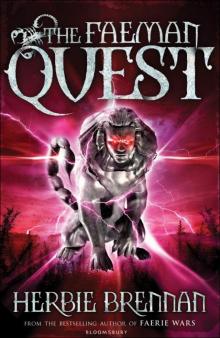 The Faeman Quest fw-5
The Faeman Quest fw-5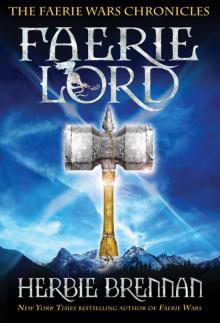 Faerie Lord
Faerie Lord Madame de Gaulle's Penis
Madame de Gaulle's Penis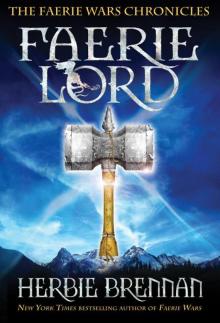 Faerie Lord fw-4
Faerie Lord fw-4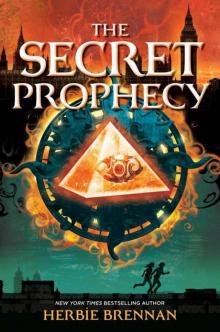 The Secret Prophecy
The Secret Prophecy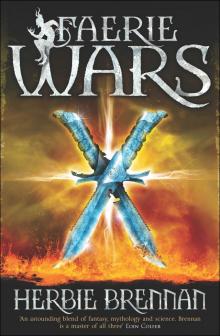 Faerie Wars
Faerie Wars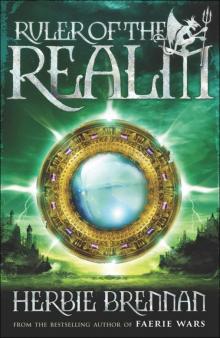 Ruler of the Realm
Ruler of the Realm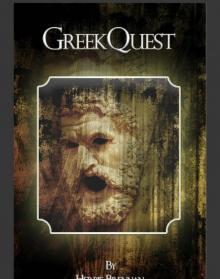 GreekQuest
GreekQuest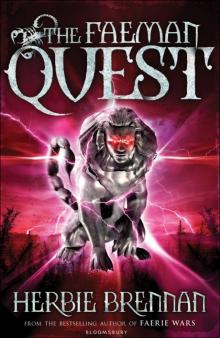 The Faeman Quest
The Faeman Quest The Purple Emperor
The Purple Emperor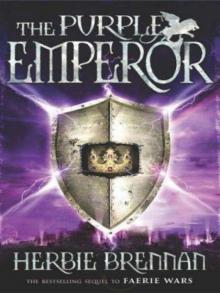 The Purple Emperor fw-2
The Purple Emperor fw-2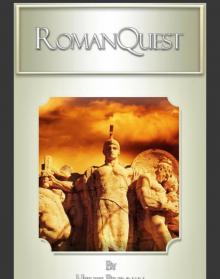 RomanQuest
RomanQuest The Doomsday Box
The Doomsday Box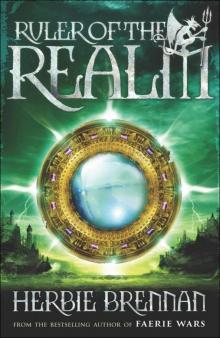 Ruler of the Realm fw-3
Ruler of the Realm fw-3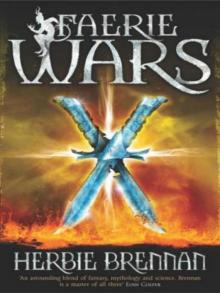 Faerie Wars fw-1
Faerie Wars fw-1